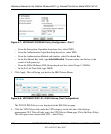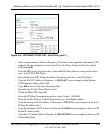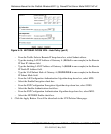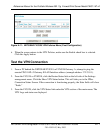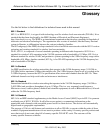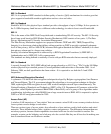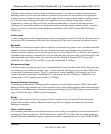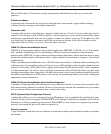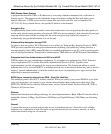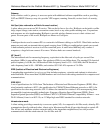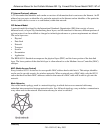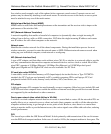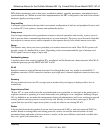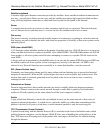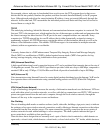
Reference Manual for the ProSafe Wireless 802.11g Firewall/Print Server Model FWG114P v2
-4 Glossary
201-10301-02, May 2005
ISA bus Wi-Fi radios. Client devices usually communicate with hub devices like access points and
gateways.
Collision avoidance
A network node characteristic for proactively detecting that it can transmit a signal without risking a
collision, thereby ensuring a more reliable connection.
Crossover cable
A special cable used for networking two computers without the use of a hub. Crossover cables may also be
required for connecting a cable or DSL modem to a wireless gateway or access point. Instead of the signals
transferring in parallel paths from one set of plugs to another, the signals "crossover." If an eight-wire cable
was being used, for instance, the signal would start on pin one at one end of the cable and end up on pin
eight at the other end. They "cross-over" from one side to the other.
CSMA-CA (Carrier Sense Multiple Action)
CSMA/CA is the principle medium access method employed by IEEE 802.11 WLANs. It is a "listen before
talk": method of minimizing (but not eliminating) collisions caused by simultaneous transmission by
multiple radios. IEEE 802.11 states collision avoidance method rather than collision detection must be used,
because the standard employs half duplex radios—radios capable of transmission or reception—but not both
simultaneously.
Unlike conventional wired Ethernet nodes, a WLAN station cannot detect a collision while transmitting. If a
collision occurs, the transmitting station will not receive an ACKnowledge packet from the intended receive
station. For this reason, ACK packets have a higher priority than all other network traffic. After completion
of a data transmission, the receive station will begin transmission of the ACK packet before any other node
can begin transmitting a new data packet. All other stations must wait a longer pseudo randomized period of
time before transmitting. If an ACK packet is not received, the transmitting station will wait for a subsequent
opportunity to retry transmission
CSMA-CD (Carrier Sense Multiple Action/Collision Detection)
A method of managing traffic and reducing noise on an Ethernet network. A network device transmits data
after detecting that a channel is available. However, if two devices transmit data simultaneously, the sending
devices detect a collision and retransmit after a random time delay.
DHCP (Dynamic Host Configuration Protocol)
A utility that enables a server to dynamically assign IP addresses from a predefined list and limit their time
of use so that they can be reassigned. Without DHCP, an IT Manager would have to manually enter in all the
IP addresses of all the computers on the network. When DHCP is used, whenever a computer logs onto the
network, it automatically gets an IP address assigned to it.
Diversity: antenna
A type of antenna system that uses two antennas to maximize reception and transmission quality and reduce
interference



